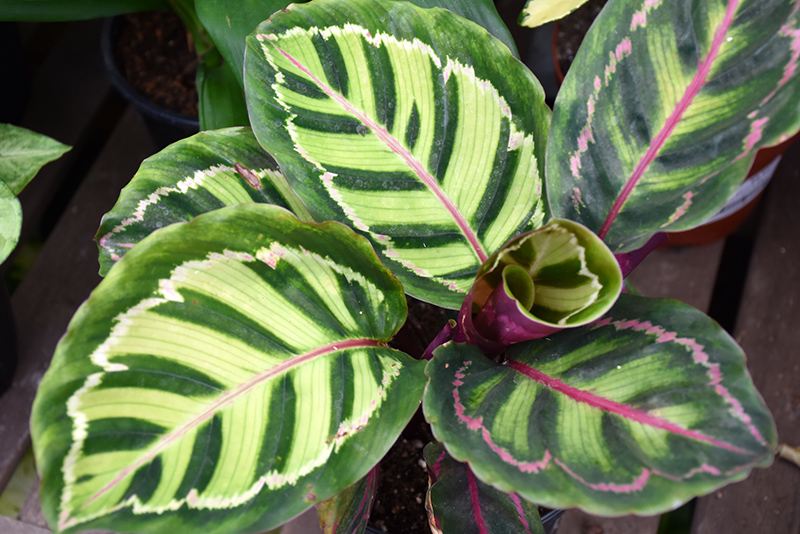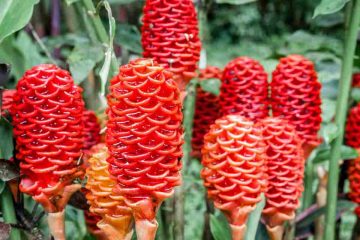Facts about Rose Painted Calathea
- Botanical Name: Calathea Roseopicta
- Common Name: Rose Painted Calathea
- Family: Marantaceae
- Native Area: Brazil
- Plant Type: Foliage, vine, large type
- Sun Exposure: Bright indirect sunlight
- Hardiness Zones: 11-12 USDA
- Soil Type: Well-draining, peat-based potting mix.
- Soil pH: Acid, Neutral, Slightly Alkaline
- Bloom Time: Anytime, but flowers are small
- Flower Colors: Pink, purple, dark green
- Sun Exposure: Bright indirect sunlight
Rose Painted Calathea- An Overview
Introducing the mesmerizing Calathea Roseopicta, commonly known as the Rose Painted Calathea. This botanical beauty steals the spotlight with its lush, velvety leaves, adorned by vibrant pink stripes and veins that create a stunning visual spectacle. Hailing from the verdant rainforests of Brazil, this plant belongs to the prayer-plant family, exhibiting a unique behavior of its large leaves facing upwards as if in prayer.
Their broad tropical foliage showcases a striking feathery pattern of pink and fuchsia, resembling hand-painted strokes on dark green leaves. With age, the vibrant stripes on these leaves tend to fade and lighten.
At night, the underside of the leaves reveals a flashy purplish-red hue when the plant folds up. Growing from rhizomes, Calathea roseopicta tends to form clusters with a clumping growth habit. Being evergreen, it offers a continuous display of its beautiful colors throughout the year.
While Rose Painted Calathea hybrids exhibit a variety of unique colors, leaf shapes, and patterns, they are distinguished by their feathery border pattern, adding to the allure of these captivating plants.
Calathea Roseopicta Varieties
- Calathea Roseopicta ‘Medallion’: This classic variety features large, dark green leaves with deep purple undersides, adding a touch of tropical charm. The contrast between the dark green and purple hues creates a striking visual appeal.
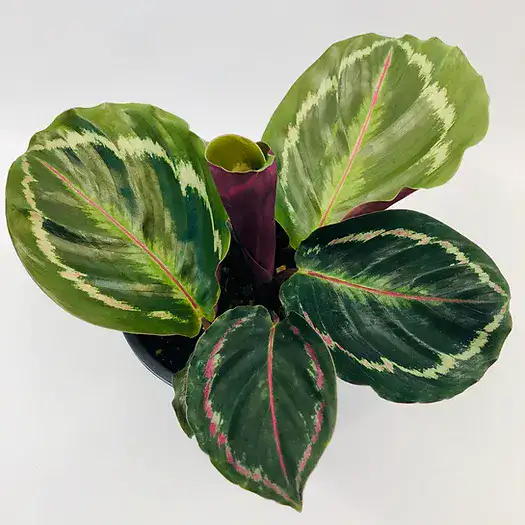
- Calathea Roseopicta ‘Dottie’: ‘Dottie’ is known for its deep green leaves adorned with pink spots, giving it a playful and whimsical appearance. The pink spots against the green backdrop create an eye-catching contrast, making it a popular choice among plant enthusiasts.

- Calathea Roseopicta ‘Rosy’: ‘Rosy’ stands out with its bright pink-brushed silver leaves bordered by a dark green rim. This variety exudes elegance and sophistication, with the pink hues adding a pop of color to any indoor space.
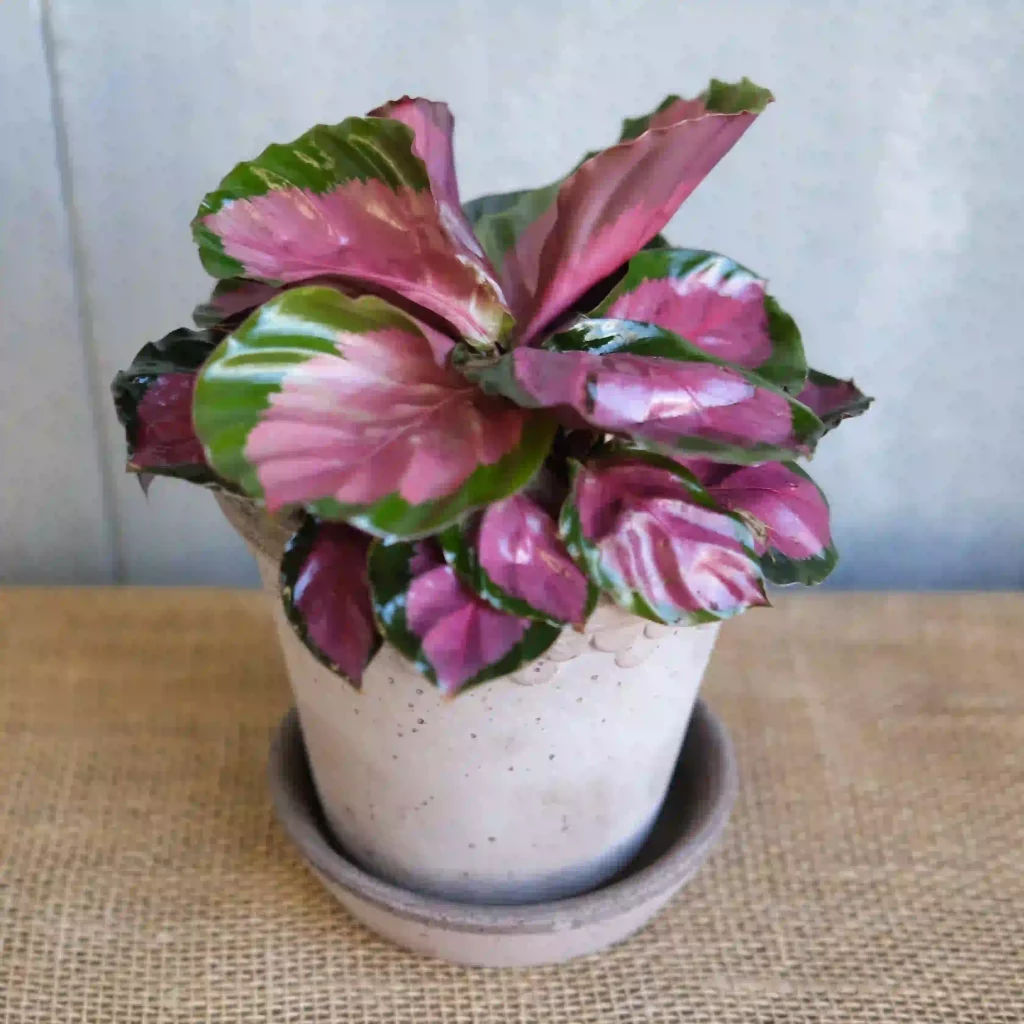
- Calathea Roseopicta ‘Cora’: ‘Cora’ features striking silver leaves with dark green edges, creating a captivating contrast. The silver tones give ‘Cora’ a sleek and modern look, making it a stylish addition to any home or office decor.
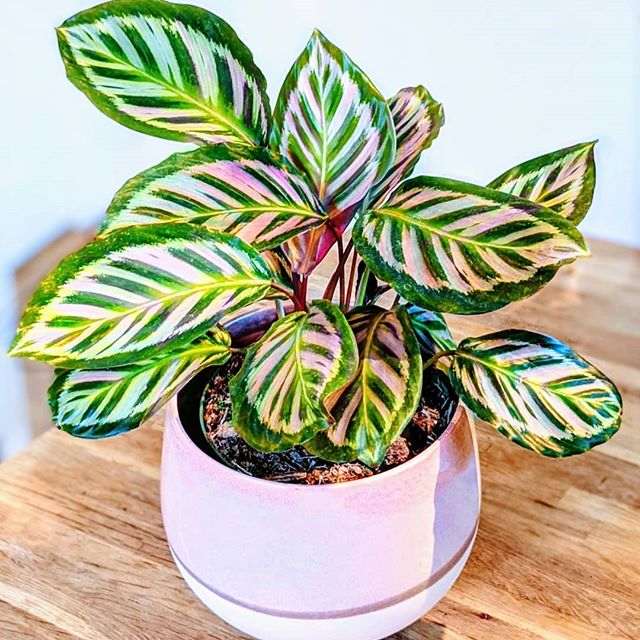
- Calathea Roseopicta ‘Eclipse’: ‘Eclipse’ is characterized by its dark green leaves with subtle silver patterns and deep purple undersides. The combination of green, silver, and purple creates a mesmerizing effect, making ‘Eclipse’ a standout choice for plant enthusiasts.
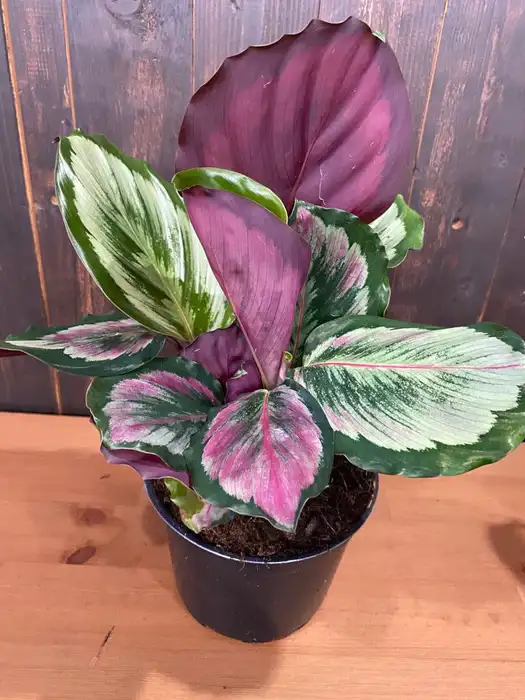
- Calathea Roseopicta ‘Sanderiana’: ‘Sanderiana’ is distinguished by its elongated, lance-shaped leaves with vibrant green markings and deep purple undersides. The bold contrast between the green and purple hues makes ‘Sanderiana’ a visually stunning variety.
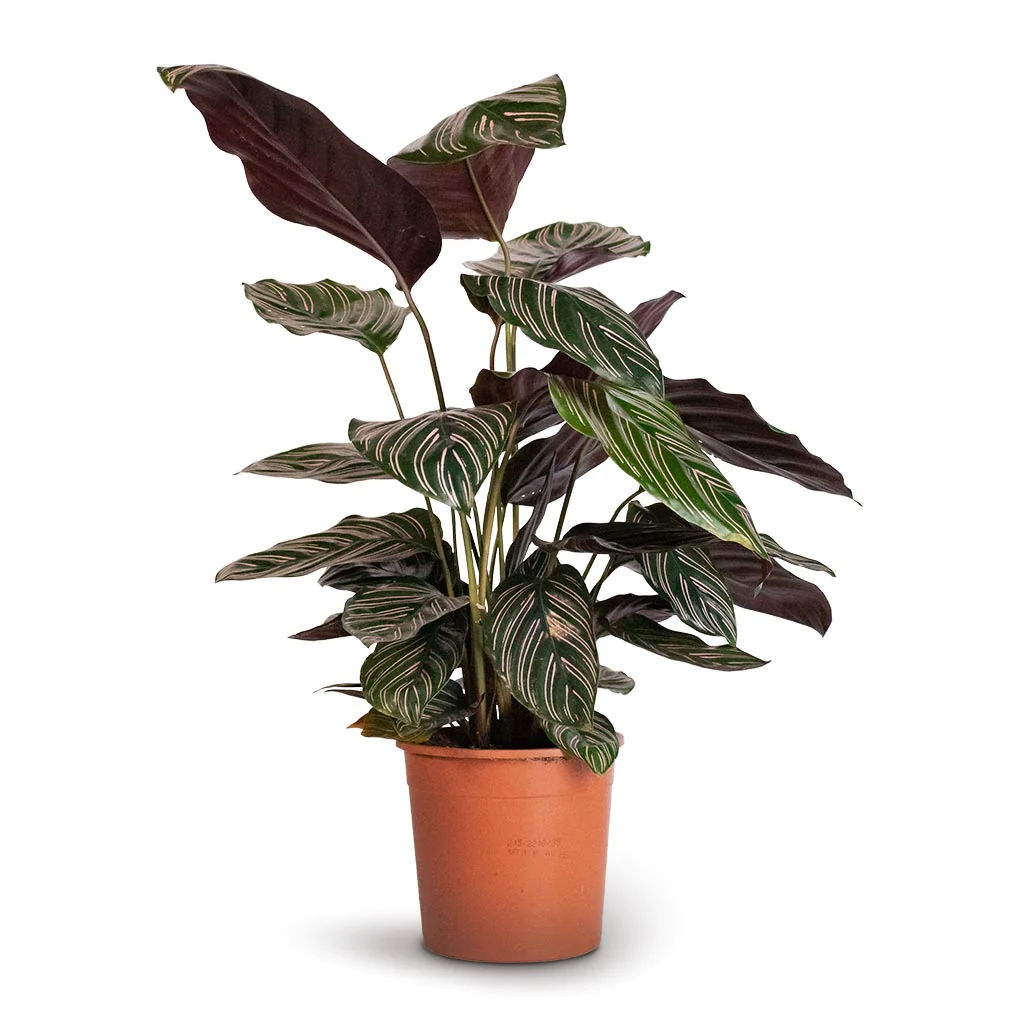
How to care for Rose Painted Calathea?
Caring for Rose Painted Calathea involves providing the right environment, watering, feeding, and occasional maintenance. Here’s a comprehensive guide:
Light Requirements
Calatheas thrive when provided with ample filtered light. Excessive exposure to direct sunlight can result in fading and loss of leaf markings. While Calathea Roseopicta plants can tolerate shaded conditions, optimal health and foliage vibrancy are achieved with increased exposure to bright, indirect light.
Humidity Requirements
Maintaining high humidity levels is essential for this tropical houseplant. You can increase humidity by misting your plant regularly. Alternatively, position it near a shower or a humidifier to ensure it reaches an optimal humidity level of above 60%.
Watering Requirements
To ensure the health of this Calathea plant (as well as all Calathea plants), it’s crucial to maintain consistently moist soil. However, it’s imperative to prevent the plant from sitting in waterlogged soil, as this can lead to root rot or fungal diseases. To prevent overwatering, regularly check the soil moisture levels by inserting a finger into the soil.
Soil Requirements
To thrive, this plant requires well-draining, spongy soil rich in organic matter. While the Calathea Roseopicta requires consistent moisture, it cannot tolerate waterlogged soil. Adding ⅓ perlite to a commercial soil mixture can enhance drainage and ensure optimal soil conditions.
Temperature Requirements
To promote optimal growth, maintain a tropical environment for your Calatheas by keeping temperatures between 64 to 85ºF. Ensure proper ventilation for your plant and prevent exposure to droughts, drafty windows, and sudden temperature changes.
Fertilizer
For easy fertilization of this rose painted calathea plant, incorporate nutrient-rich compost into the soil during repotting to sustain it throughout the active growing season. If you observe brown tips on the plant’s leaves, it’s probably due to an accumulation of fertilizer salts in the soil. To remedy this issue, flush the soil with a continuous stream of water for approximately 10 minutes, considering the use of distilled water instead of tap water.
Calathea Roseopicta Propagation
Propagating a healthy Calathea Roseopicta through division is a straightforward process. The ideal time for division is when the plant has numerous young plantlets. Here’s how to proceed:
- Carefully remove the plant from its pot.
- Gently separate the plant’s clumps, ensuring each new plant has roots and at least one leaf. Clean scissors can be used for this task.
- Plant each new division in a small, snug container using the same soil composition as the parent plant.
- Maintain even moisture in the soil and provide filtered indirect light for the new plants.
- If the humidity in the environment is low, create an enclosure around the plant with clear plastic.
- Once new growth appears, gradually remove any covering and continue regular care.
Rose Painted Calathea Common Problems
If you encounter issues with your Calathea Roseopicta, it’s crucial to address them promptly to prevent potential harm to nearby plants, even though you shouldn’t face many problems if you provide proper growing conditions.
Root Rot
Overwatering causes root rot, typically occurring during winter. To resolve this issue, allow the soil to dry completely and decrease watering frequency. Alternatively, let half of the soil dry out between waterings, using the finger test to determine when the top 2 inches of soil are dry.
Common Pests
You can quickly eliminate common Calathea pests such as aphids, mealybugs, spider mites, and scale by using mild insecticidal soaps and alcohol-soaked cotton balls.
Yellow Leaves
Overwatering likely causes yellow leaves. Before watering, check the soil moisture and ensure the top layer has dried out.
Calothea Roseopicta Toxicity
All Calathea plants are non-toxic, making them safe to keep around pets and kids. However, it’s wise to keep houseplants out of reach of small children and curious four-legged friends.
Conclusion
In conclusion, cultivating and caring for Rose Painted Calathea indoors offers a rewarding journey filled with vibrant foliage and lush greenery. By providing ideal growing conditions, including filtered light, consistent moisture, and high humidity, you can ensure the health and vitality of your plant year-round. Promptly addressing any issues such as root rot or pest infestations with proper techniques and treatments will help maintain its beauty. Remember, the Calathea Roseopicta’s non-toxic nature adds to its appeal, making it a safe and delightful addition to any home. With patience, attention, and a bit of TLC, your Rose Painted Calathea will thrive and flourish, bringing joy and tranquility to your indoor space.
Gardening enthusiasts can also learn how to grow Swiss Cheese Plant at home.

